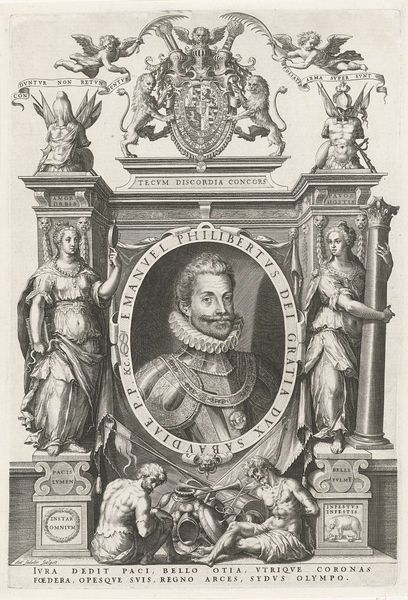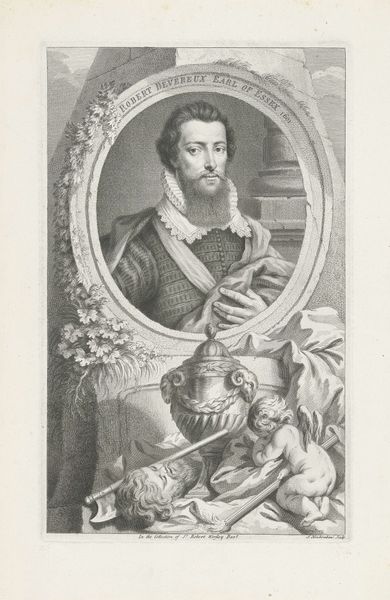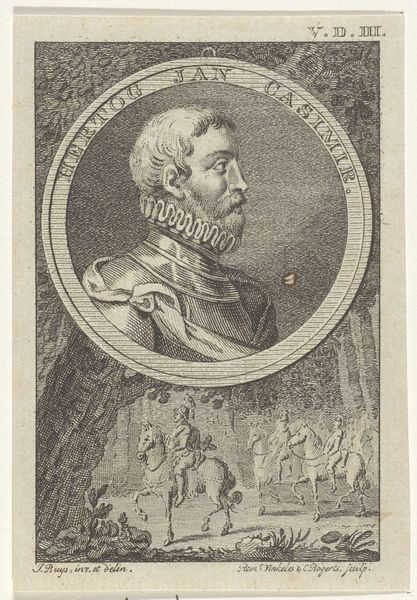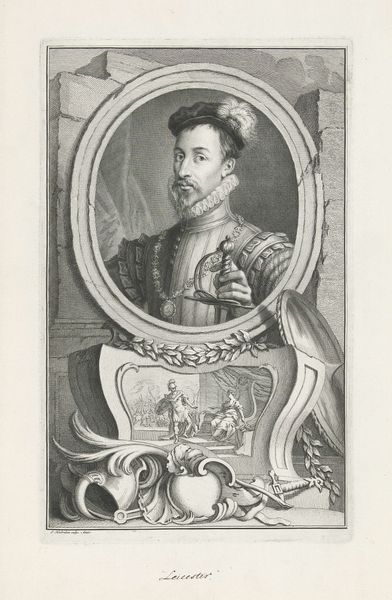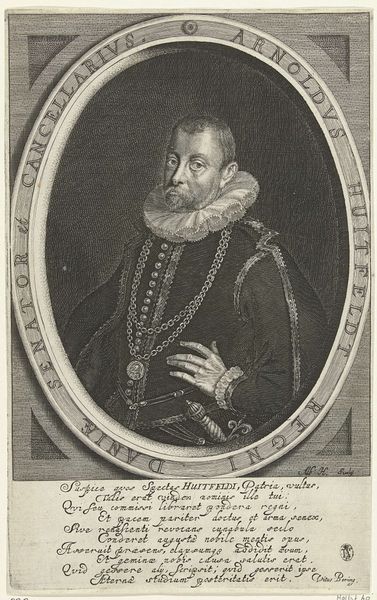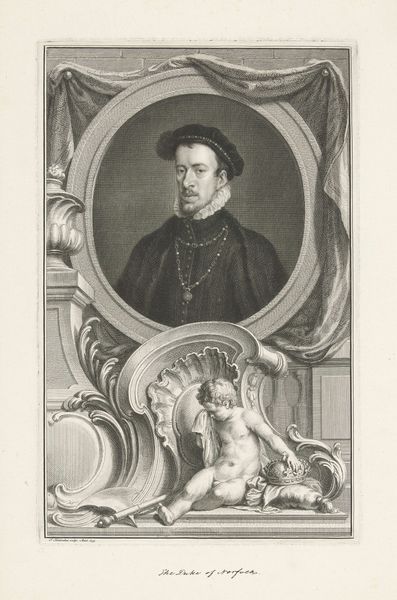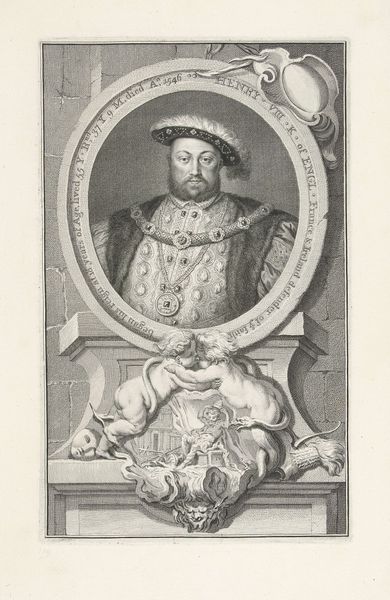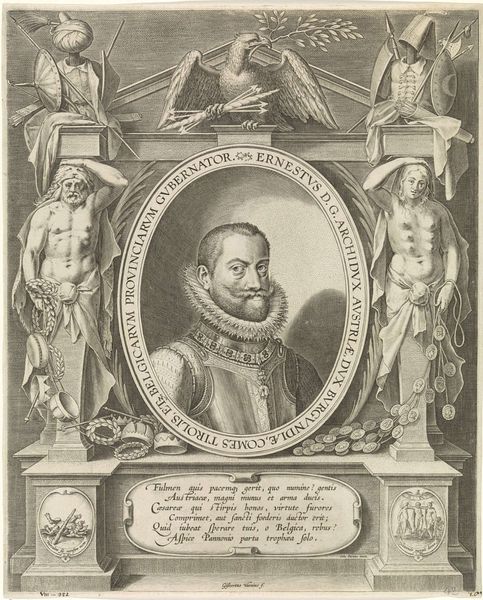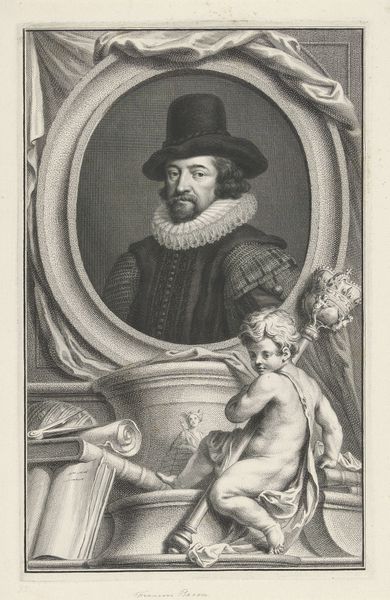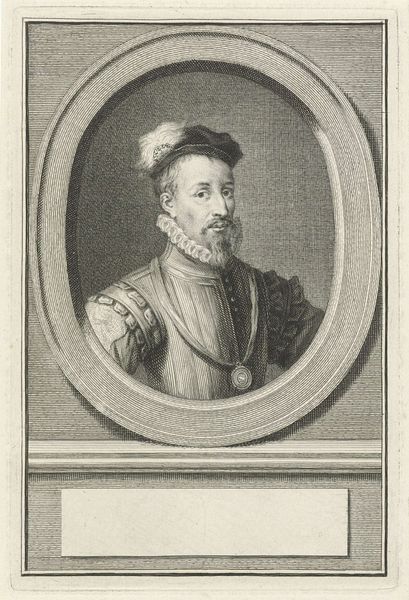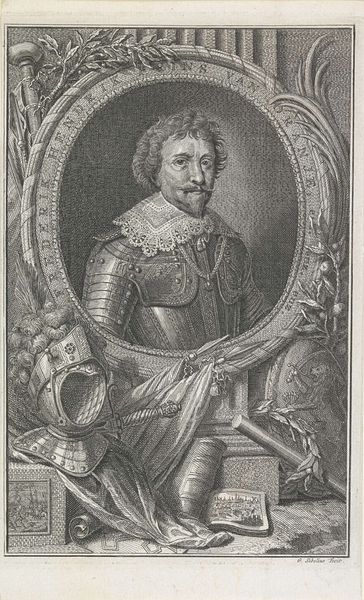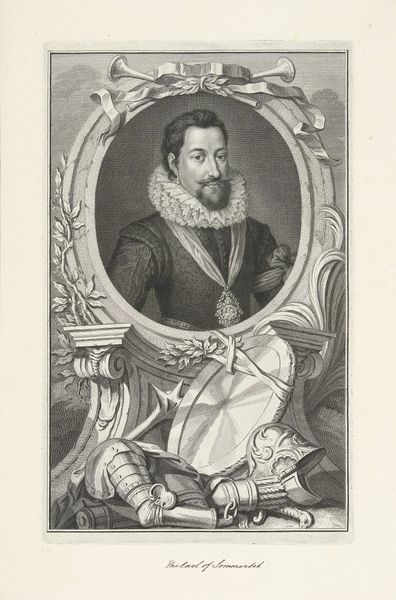
print, engraving
#
portrait
#
baroque
# print
#
old engraving style
#
line
#
history-painting
#
engraving
Dimensions: height 311 mm, width 179 mm
Copyright: Rijks Museum: Open Domain
Curator: Look at this intriguing print, "Portret van koning Jacobus I van Engeland," made sometime between 1669 and 1731 and attributed to Pieter van Gunst. It’s currently held here at the Rijksmuseum. Editor: My first impression? Regal melancholy. The stark lines create a serious mood, yet those cheeky cherubs at the base give it a strange playfulness. What strikes you about it? Curator: Beyond the aesthetic, it places James I within a complex power dynamic, especially considering the fraught historical context of his reign. We see him framed, literally, within a symbolic order meant to reinforce his authority. Editor: Yes, the frame itself is a fascinating choice. The oval shape softens the severe rectangular format of the print. But consider the objects: a crown placed beneath the portrait, two cherubs with wings. And that book – or perhaps a tablet – displaying an emblem, what stories do those visual elements carry for you? Curator: For me, the symbolism around James I is a re-telling of British history after a period of religious conflict. We see how he sought to project an image of divine right and stability. Editor: The line engraving, while simple, really emphasizes details. It draws your eye to James’s clothing, to the crisp lace ruff, and of course, the weight of his gaze. The very style evokes a specific moment and carries certain connotations tied to ideas of representation. It has an official nature with underlying themes of authority. Curator: Absolutely, it’s fascinating how printmaking, a relatively accessible medium, was used to disseminate carefully crafted messages of power during this period. The image was no doubt widely circulated, contributing to the construction—and potential deconstruction—of the King's image. How subversive could this image possibly be? Who did this image target? Editor: These are very insightful questions to ask, ones that truly emphasize how art becomes the crossroads where iconography meets politics. Well, what I’ll take away with me is a revived awareness for how potent imagery like the royal portrait functions—it’s about preserving cultural memory, asserting control and more subtly influencing those who engage with it.
Comments
No comments
Be the first to comment and join the conversation on the ultimate creative platform.
